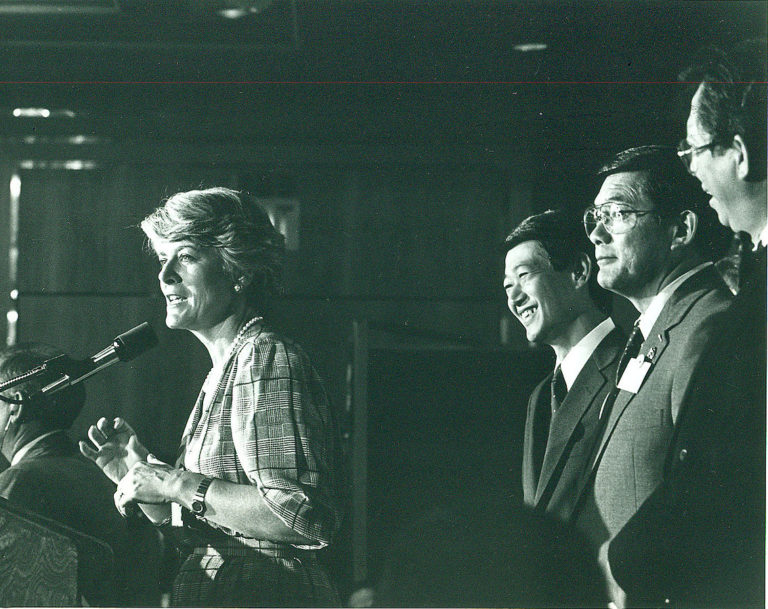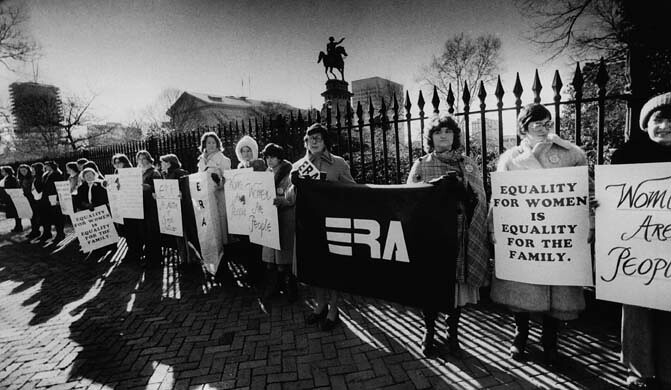Image: Geraldine Ferraro at the Democratic National Party Convention, 1984 Every four years, the Republican…
Party Rules Shape the Makeup of National Conventions

With the dust settling on the Democratic and Republican National Conventions, it’s important to remember that women are underrepresented at all levels of the political process, including party leadership. For years, the Democratic and Republican National parties have tried to remedy this issue. Today, rules by national parties aim to achieve equal division amongst state delegations to increase the percentage of women in a state party’s national convention delegation.
The Democratic National Party requires all state delegations to the national convention be equally divided between men and women. The Republican National Party, meanwhile, mandates that state parties endeavor to have equal representation. It may seem at first read that these rules are similar; however, the small difference between them has a profound impact on the official delegations.
A new brief on party rules and gender parity from RepresentWomen explores in depth the rules that are used at state and national party levels, and the 2017 research accompanying this brief reveals the effects these rules have on the delegation actually sent: based on the data of women’s representation at both the Democratic and Republican 2016 national conventions, forty-seven states sent delegations to the DNC composed of at least 40% women, while 15 states sent delegations to the RNC with the same makeup.
There are also party differences in each state party’s committee makeup— 34 Democratic state parties and 16 Republican state parties have rules that encourage equal representation at state party meetings. Many state parties encouraging equal representation do so by requiring each precinct in their state to send an equal number of male and female representatives to state meetings.
Opponents of the equal division rule have argued that such rules restrict voters’ right to choose who represents them at party meetings by requiring women to be represented equally, and infringes upon the voting rights given to voters through the Constitution. However, cases such as Bachur v. Nat’l Democratic Party and Cousins v. Wigoda concluded that political parties have a right to shape their delegations in this way, as long as their methods support some rational interest of their party.
And for good reason— research shows recruitment for office is an important factor for increasing the number of women who run and that recruitment is most effective when conducted by elected officials and party leaders. When fewer women attend state and national party conventions, they may miss out on chances to meet leaders with influence, as well as future recruitment opportunities and connections needed for running successful campaigns.
While we can’t require that more spaces are held for women in office, we can provide more opportunities for women to run and get involved in the political process. Gender balance rules in political parties promises opportunities (though not outcomes) for women to learn from and be recruited by party leaders.







